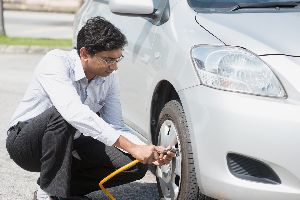5 Tips for Taking a Car Out of Storage

When you put a sports car in storage for the winter, the goal is to protect it so that you can drive it when the weather warms. However, before you go for a cruise, checking the vehicle and handling any necessary auto repairs will ensure it is ready. Below are some tasks to handle after taking your vehicle out of hibernation.
What Should You Do Before Driving a Car in Storage?
1. Look Over It
When you open up the storage area, look closely at the vehicle, starting at the front and working toward the back. Look underneath for signs of corrosion or leaks, as these can develop after a long period without driving. Also, check the tailpipe and engine bay for critters that might have started nesting while the car was inactive. Then, open the doors to air out the interior.
2. Check the Battery
If you used a trickle charger to prevent battery drain during the winter, remove it before starting the car. If you disconnected the battery, test the voltage before reinstalling it. The battery requires at least 12 volts to be effective, so you may need to replace or recharge the device to avoid damaging the alternator.
Also, pay attention to signs of corrosion around the terminals, which usually appears as a white, chalky substance. If this is present, carefully remove residue on the clamps and posts before connecting the device. If you leave the corrosion, the battery will die faster.

3. Inspect the Tires
The tires are particularly vulnerable to damage when you aren't driving, as the weight of the vehicle presses down on the rubber during this period. Look for cracks, tears, and bulges on the surface of the tires and replace them if the sidewalls have punctures. Also, check the air pressure and inflate to the manufacturer recommend level. You can find this inside the driver's side door jamb.
4. Replace Fluids
Next, consider taking the car to an auto repair shop to perform a thorough inspection. They will test the levels of each fluid and replace anything that may have leaked during the winter. After this, park the car and wait to see if any fresh spots appear underneath, as refilling the fluids can sometimes show hidden leaks.
5. Test the Brakes
Before driving a long distance, start the car and let it warm up for several minutes. While idling, step on the brake pedal and observe how it feels. The brake should be firm; a spongy feeling can indicate that you do not have enough brake fluid, while a squealing sound signals the pads are worn.
After taking your vehicle out of storage, visit Mullanphy Tire & Automotive in Florissant, MO, to inspect the car and ensure it is in top shape. These auto repair professionals can handle everything from battery replacements and oil changes to transmission and engine repair. Call (314) 921-4961 to schedule an appointment. Visit the website to learn more about their services.
About the Business
(84 reviews)
Have a question? Ask the experts!
Send your question

